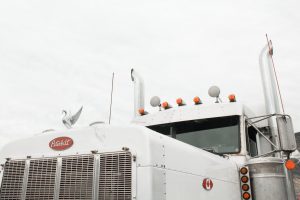U.S. reinstating truck usage survey after 2 dormant decades

After 2 dormant decades, the federal government is resurrecting the Vehicle Inventory and Use Survey (VIUS), a tool for measuring light, medium and heavy-duty truck trends in the U.S.
After two dormant decades, the federal government is resurrecting the Vehicle Inventory and Use Survey (VIUS), a tool for measuring light, medium and heavy-duty truck trends in the U.S., which could help plan future infrastructure, traffic and safety improvements.
The Bureau of Transportation Statistics (BTS) began collecting data for VIUS in February. The survey was last implemented in 2002. Focusing on the physical and operational characteristics of U.S. trucks, information from the study of 150,000 randomly selected vehicle owners will be used by the government to understand better how trucks are used to transport various goods.
The survey focuses on how vehicles operated during the previous calendar year. The 2021 VIUS is being conducted in partnership with the Federal Highway Administration, Department of Energy, and the Census Bureau to better understand the characteristics and use of vehicles on U.S. roads. According to the BTS, the data will guide investments in infrastructure, vehicle technologies and parts. It also is used to evaluate truck safety needs, emissions estimates, and conservation practices.
1963 Truck Inventory and Use Survey

What started in 1963 as the Truck Inventory and Use Survey, the program began issuing analysis of its collected data every five years between 1967 and 2002.
Enjoying our insights?
Subscribe to our newsletter to keep up with the latest industry trends and developments.
Stay InformedWhat started in 1963 as the Truck Inventory and Use Survey, the program began issuing analysis of its collected data every five years between 1967 and 2002. It was discontinued 20 years ago because of federal budget cuts. Initially conducted on paper questionnaires mailed to about 130,000 vehicle owners, randomly selected from state motor vehicle registrations, the new survey will be online.
The Census Bureau began mailing out letters to selected participants in January, which included details on sharing data and information it seeks but asks all participants to enter that information online. The Census Bureau also put together this instructional video for vehicle owners:
The 2021 VIUS survey aims to reach 150,000 vehicle owners of Classes 1 through 8 trucks. It seeks information on vehicle body types – such as pickups, SUVs, minivans, light vans, straight trucks, and tractors. Depending on the selected vehicle’s size, owners will receive either the Heavy Vehicle Questionnaire or the Light Vehicle Questionnaire. The survey continues through October. Results should be released in fall 2023.
Light Vehicles & Heavy Equipment Questionnaire Data Points

The 2021 VIUS survey aims to reach 150,000 vehicle owners of Classes 1 through 8 trucks. It seeks information on vehicle body types – such as pickups, SUVs, minivans, light vans, straight trucks, and tractors.
The 2021 VIUS questionnaire ranges from 20 pages for light vehicles to 28 pages for heavy equipment. These are some of the data points the government is looking for:
- Vehicle safety technologies, such as collision warning, parking assist and vehicle-to-vehicle communications
- Vehicle fuel types, including alternative fuel sources
- Vehicle maintenance and level of repairs
- The uses of vehicles, including how often they are used, their capabilities, how far they travel, and why they travel
- Miles traveled and fuel economy by weight, type, configuration, and age of vehicle
- Axle configurations, trailers hauled, and operating weight
- Equipment added after manufacture of the chassis
- Business versus personal use and types of economic activity served
- Commodities carried
BTS called the VIUS estimates data “of critical importance to federal agencies, state departments of transportation, metropolitan planning organizations, business, and drivers alike.” It announced the results of the 2021 survey would offer statistics that include:
- Vehicle size and weight studies
- Tracking the deployment of driver-assistance technology
- Input to freight demand models and air quality models
- Role of motor vehicles in the economy
- Fuel efficiency of the nation’s truck fleet
- Analyses of fees and allocation of cost among highway users
- Highway traveler exposure to potential safety risks
Those statistics, according to BTS, will guide federal and state investments into three main areas:
- Better roads, bridges, fueling stations, and other transportation infrastructure at the local and state level
- Decrease traffic congestion and energy usage on the nation’s roadways
- Increase safety and the ability to move goods more effectively





















